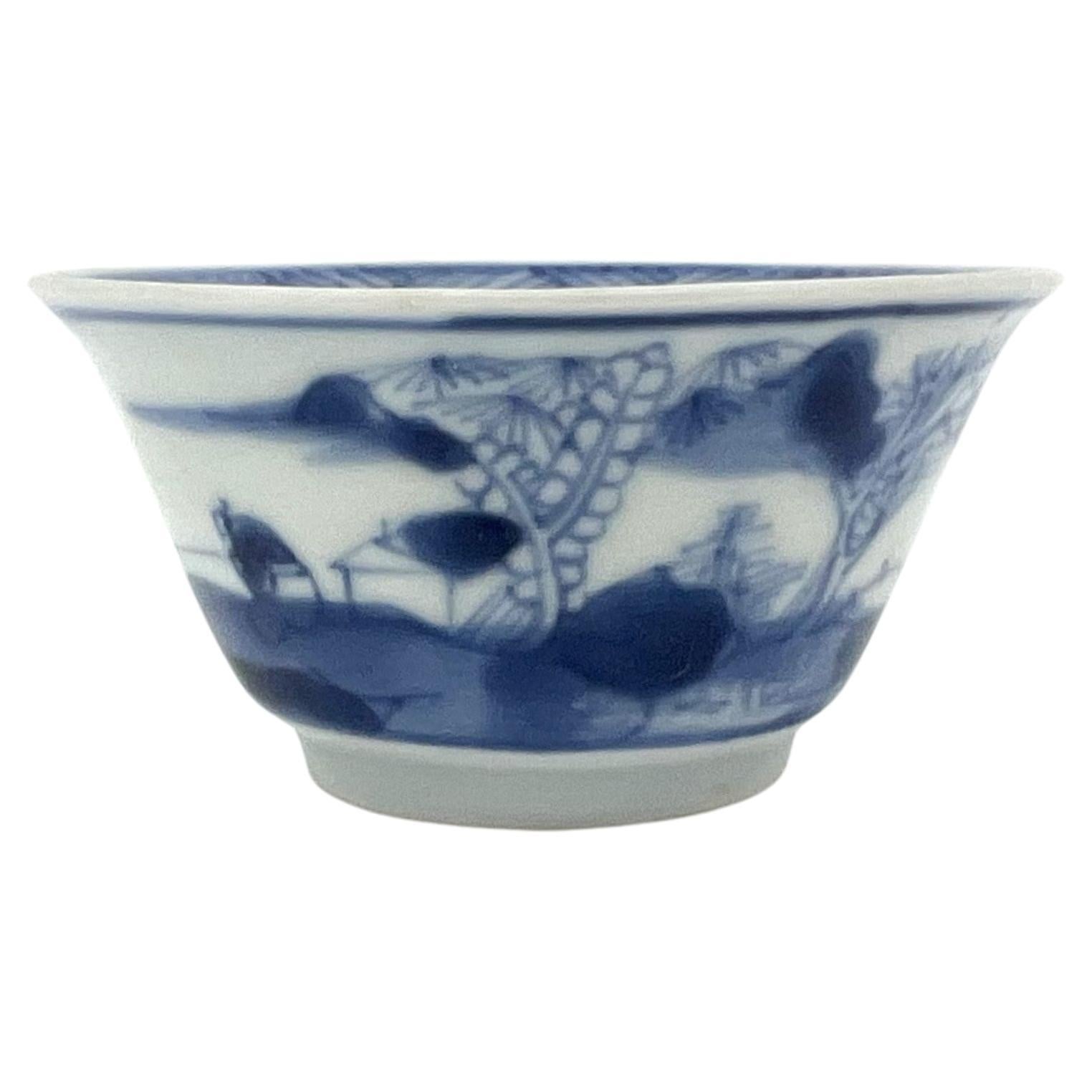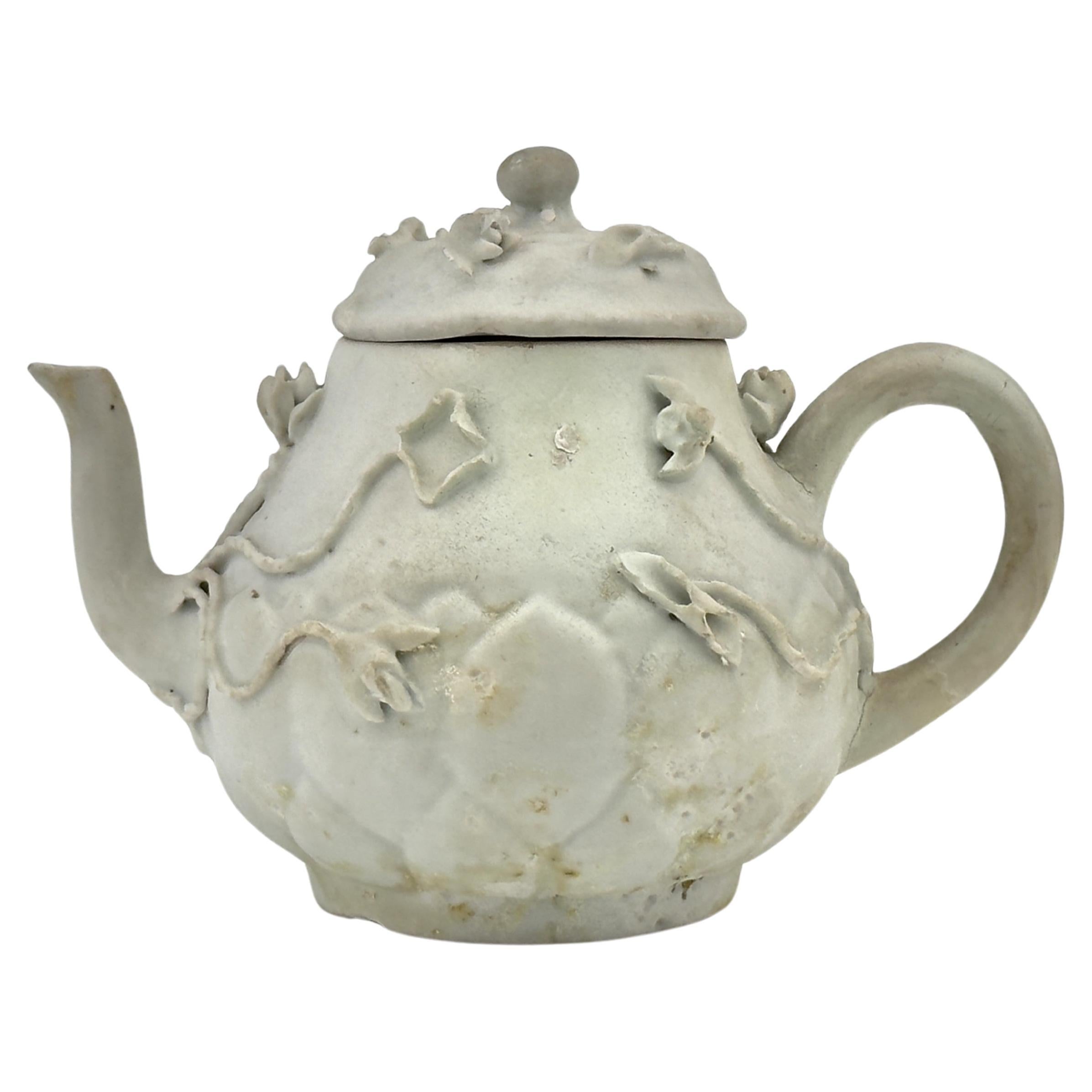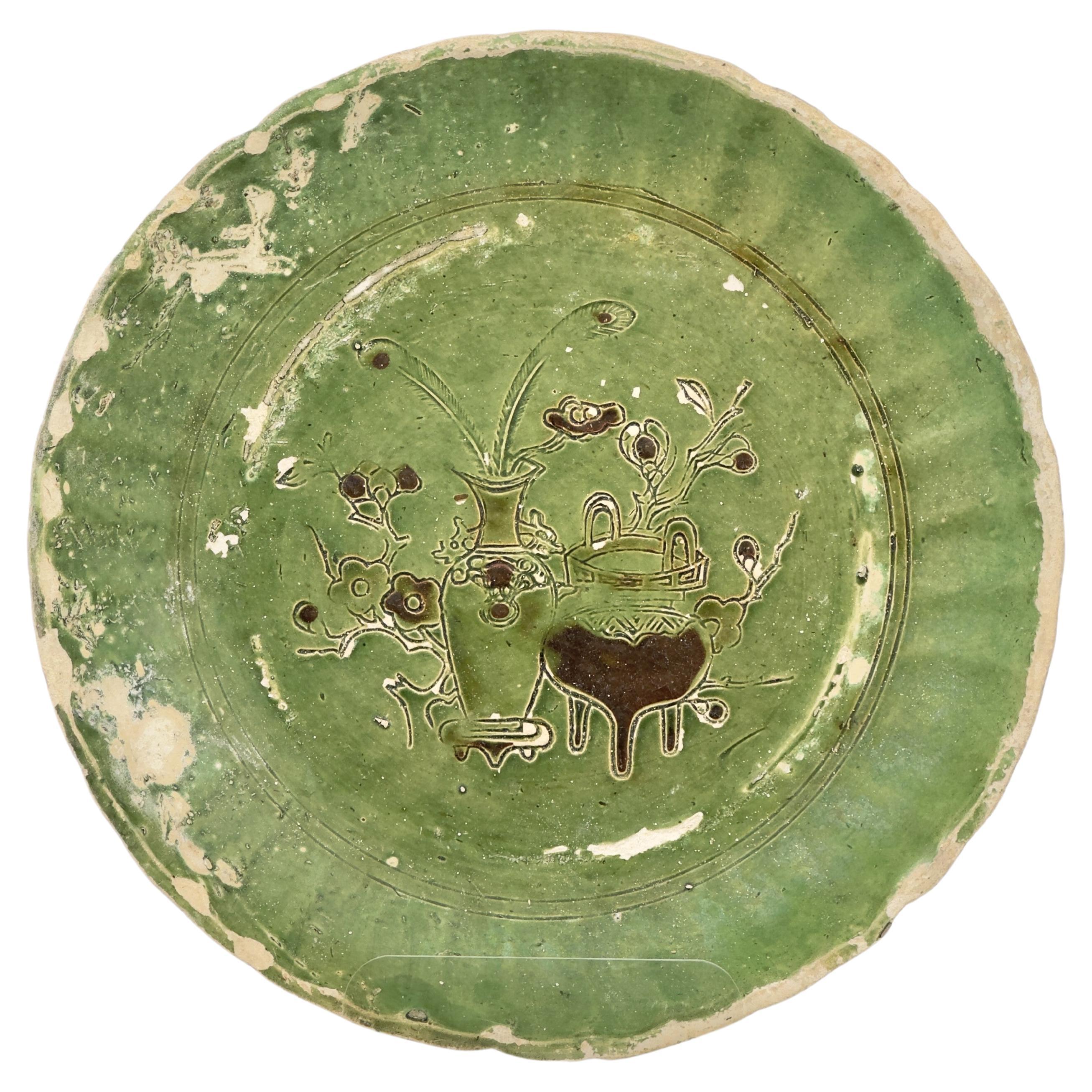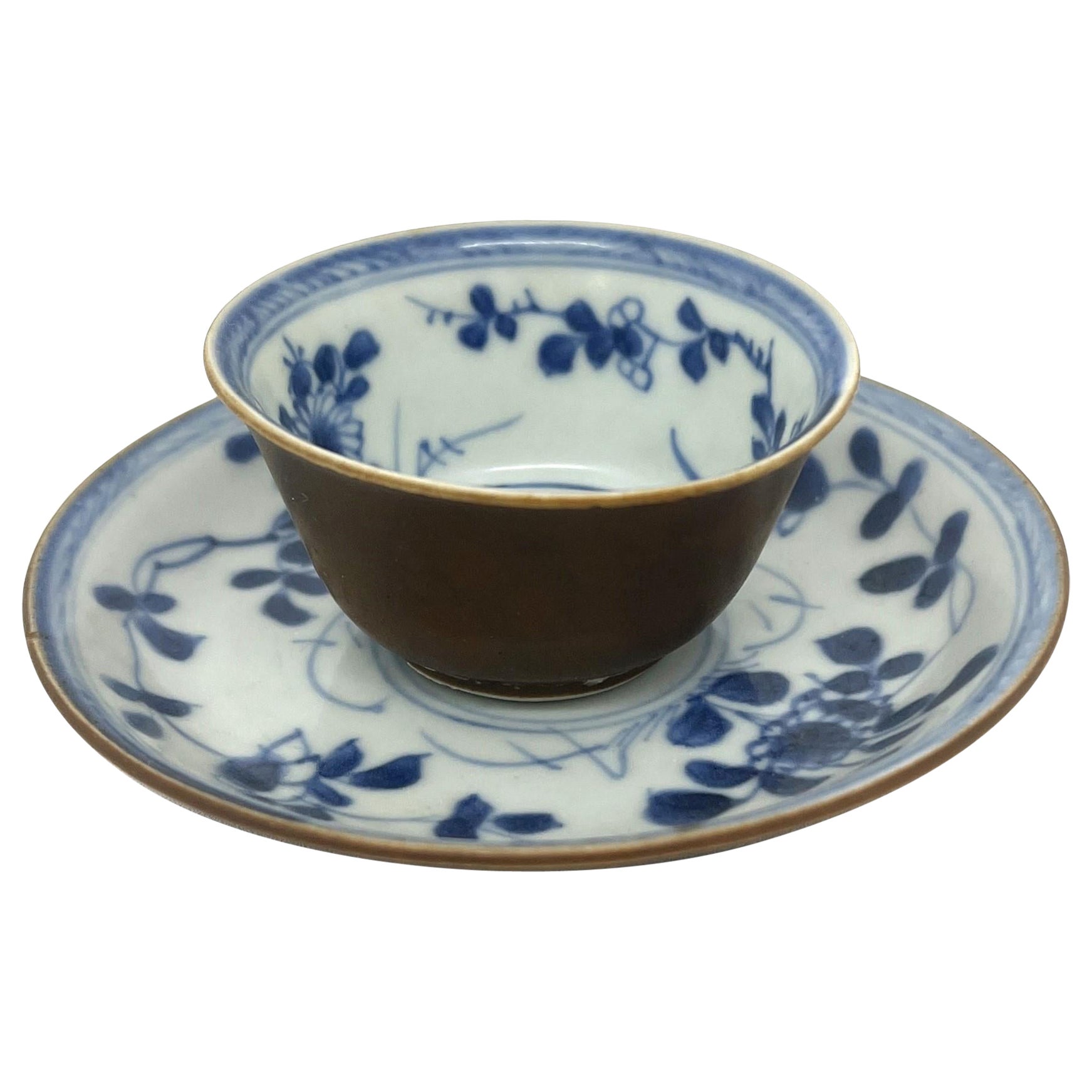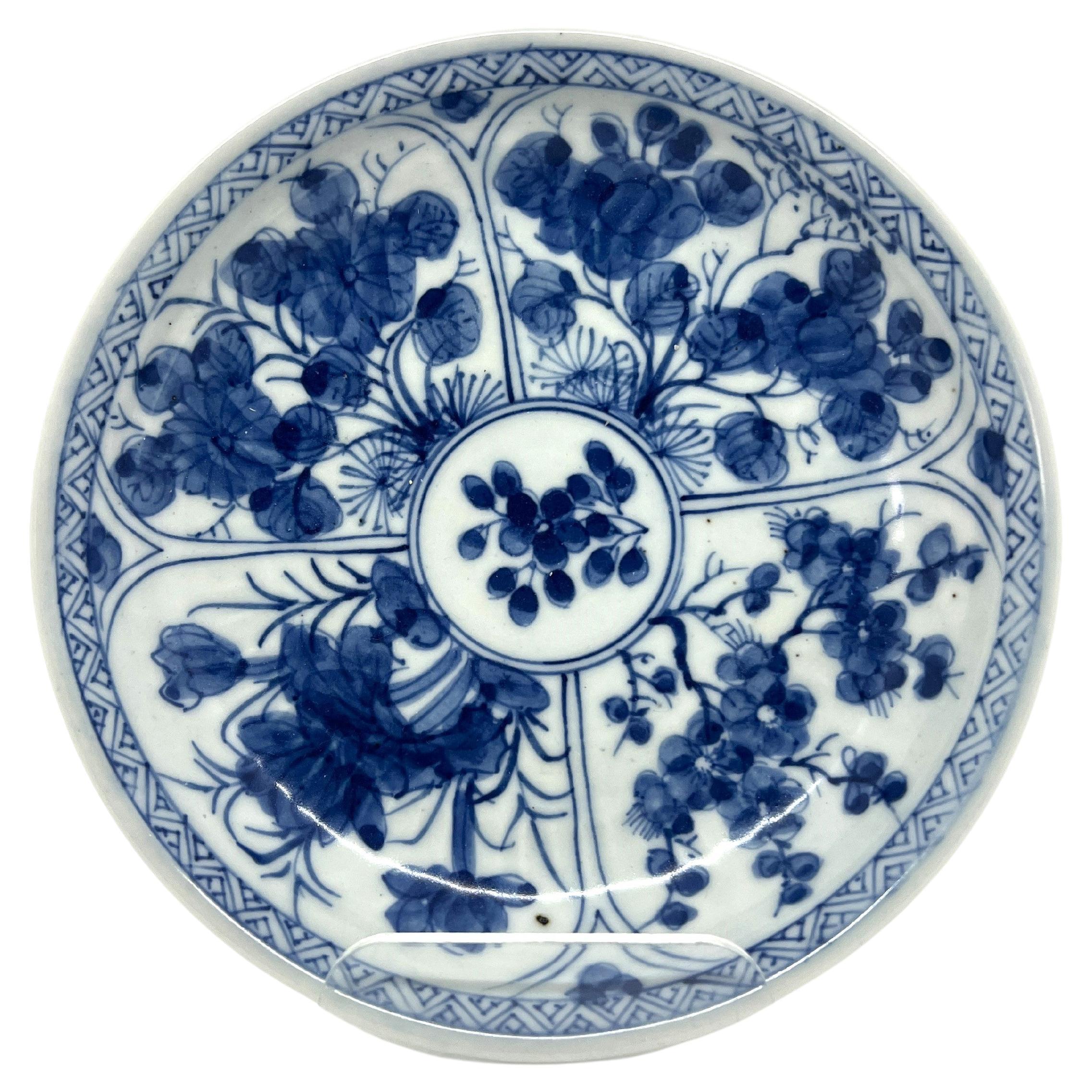Items Similar to Fish Trade Blue and white saucer, circa 1725, Qing Dynasty, Yongzheng Reign
Want more images or videos?
Request additional images or videos from the seller
1 of 6
Fish Trade Blue and white saucer, circa 1725, Qing Dynasty, Yongzheng Reign
About the Item
The drawing captures a scene of trade on blue and white porcelain, where a woman and a man are engaged in a transaction. The woman, dressed in traditional attire, stands with a poised demeanor, holding an object like bowl. Opposite her, the man is portrayed with an expression of intent, his stance slightly crouched as he presents a fish, a common item of trade in many cultures. The exchange seems amicable, as if part of a daily routine or a social ritual. The artistry of the scene is conveyed through the delicate ink lines that highlight the flow of the garments and the animated postures, typical of the meticulous work found in historical porcelain art.
Period : Qing Dynasty, Yongzheng Period
Production Date : C 1725
Made in : Jingdezhen
Destination : Netherland
Found/Acquired : Southeast Asia , South China Sea, Ca Mau ship
Reference : Double checked with reference to the original catalogues
1) Tau Co Ca Mau(The Ca Mau Shipwreck) Catalogue 2002 / The National Museum of Vietnamese History
2) THE CA MAU SHIPWRECK PORCELAIN : from the Collection of Dr.Zelnik , 2000
3) Sotheby’s Amsterdam, 2007 : Made In Imperial China / Sotheby's
4) Asian Ceramic Found along Maritime Silk Route / National Maritime Museum of Korea
* The Ca Mau Cargo
The Ca Mau Cargo refers to a Chinese cargo sunken sometime between 1723 and 1735 off the coast of Vietnam’s farthest point in the South China Sea, discovered by Vietnamese fishermen in 1998. It is believed the ship was a Chinese merchant’s cargo on its way from Canton (Guangzhou) to Batavia when it caught fire and sank. The merchant had ordered the goods on board for Dutch traders, who had limited access to China and its ports.
* Porcelain for the European Market
The Ca Mau Cargo consisted of numerous types of porcelain, chinaware and blue and white wares, all designed for the European market. Blue and white ceramics recovered from the cargo appear decorated with the so-called ‘Scheveningen landscape’, also known as ‘Deshima décor’. This motif usually depicted a traditional Dutch fishing village, executed in Chinese style. Chinese wares with Western motives were extremely popular and made to order and were known as ‘China de commande’.
- Dimensions:Height: 1.19 in (3 cm)Diameter: 4.14 in (10.5 cm)
- Style:Qing (Of the Period)
- Materials and Techniques:Ceramic,Glazed
- Place of Origin:
- Period:1720-1729
- Date of Manufacture:1725
- Condition:Minor fading. Small crack at side.
- Seller Location:seoul, KR
- Reference Number:1stDibs: LU9577237624072
About the Seller
New to 1stDibs
Joined in the past six months.
4.5
Vetted Seller
These experienced sellers undergo a comprehensive evaluation by our team of in-house experts.
Established in 1999
1stDibs seller since 2023
Typical response time: 1 hour
- ShippingRetrieving quote...Ships From: seoul, Korea South
- Return PolicyA return for this item may be initiated within 10 days of delivery.
More From This SellerView All
- Riverscape Blue and White Teabowl, Circa 1725, Qing Dynasty, Yongzheng Reign.Located in seoul, KRThe serene landscape and leisure activity of fishing are meticulously captured in cobalt blue on the porcelain's white surface, suggesting the value placed on harmony with the natura...Category
Antique 1720s Chinese Qing Antiquities
MaterialsCeramic
- Blue and White Teapot Circa 1725, Qing Dynasty, Yongzheng ReignLocated in seoul, KRThis teapot is intricately decorated with patterns of flowers, leaves, and scroll-like designs. Period : Qing Dynasty, Yongzheng Period Production Date : C 1725 Made in : Jingdezhen...Category
Antique 1720s Chinese Chinese Export Antiquities
MaterialsCeramic
- White with Overglaze Enamel Teapot Circa 1725, Qing Dynasty, Yongzheng ReignLocated in seoul, KRThe wear on its surface is a testament to its age and underwater journey, giving it a unique patina that only time and nature can create. The overglaze enamel decoration that adorns ...Category
Antique 1720s Chinese Qing Antiquities
MaterialsCeramic
- Blue And White Teabowl And Saucer Set Circa 1725, Qing Dynasty, Yongzheng EraLocated in seoul, KRGraceful and simple beauty in the tea set decorated with floral patterns Period : Qing Dynasty, Yongzheng Period Production Date : C 1725 Made in : Jingdezhen Destination : Netherla...Category
Antique 1720s Chinese Qing Antiquities
MaterialsCeramic
- Green-Glazed Earthenware Dish Circa 1725, Qing Dynasty, Yongzheng ReignLocated in seoul, KRIt is the rare earthenware among those excavated from the Ca Mau Ship, and it is a green-glaze work that is especially unique. Although it is in very worn condition, it is a valuable...Category
Antique 1720s Chinese Qing Antiquities
MaterialsEarthenware
- Blue and White Flower Saucer c. 1725, Qing Dynasty, Yongzheng EraLocated in seoul, KRThe central floral motif, possibly representing peonies or another culturally significant flora, is surrounded by intricate patterns and border designs typical of the period. Pieces ...Category
Antique 1720s Chinese Chinoiserie Antiquities
MaterialsCeramic
You May Also Like
- Antique Qing Dynasty Blue and White Chinese Porcelain CenserLocated in Brea, CAQing dynasty Kang XI blue and white Chinese porcelain censer with a design of "Antiques" and auspicious objects, the base in clear glaze and the mouth...Category
Antique Early 18th Century Chinese Qing Antiquities
MaterialsPorcelain
- 18th Century Qing Dynasty Fish Shaped Cricket HolderLocated in Incline Village, NVUniquely fabulous and highly unusual item for those seeking something different; this 18th century "cricket holder" from the Qing Dynasty is in the shape of a fish and is made of hand wrought metal, with nice detail and an open woven body which provided air to the cricket. A sophisticated clasp locking mechanism on the underneath of the fish kept the pet cricket contained in the caged holder. Obviously this was intact when someone at some point in time tried to remove whatever was inside by making a hole at the base of the tail to get it out (see image). This hand held cricket cage holder is in very nice and all original condition, save for the small hole; not fragile in any way; sturdy in structure with no repairs. For over 1000 years the Chinese have used crickets...Category
Antique 1790s Chinese Qing Antiquities
MaterialsMetal
- Qing Dynasty Pair of Chinese Blue and White Octagonal Porcelain Dragon PlatesLocated in Brea, CAQing Dynasty pair of antique 19th century Chinese blue and white octagonal dragon porcelain plates decorated with four clawed coiling ...Category
Antique Early 19th Century Chinese Qing Antiquities
MaterialsPorcelain
- Qing, Yongzheng Period Blue and White Poem Decoration Porcelian Fluted-Rim PlateLocated in San Gabriel, CAQing, Yongzheng period blue and white poem decoration porcelian fluted-rim plate/ ?,?? ??????? (??)18???? Condition: Shows normal sign of wear and use, No damage or crack. Materia...Category
Antique Early 18th Century Chinese Antiquities
MaterialsPorcelain
- Chinese Export Blue and White "Cranes" Charger Qing DynastyLocated in West Palm Beach, FLA Chinese export blue and white "cranes" charger. Qing dynasty, with a tightly scalloped edge, border of stylized motifs, the center recess representing two cranes in a stylized mar...Category
20th Century Antiquities
MaterialsCeramic
- White Jade Double Gourd Pendant, Qing DynastyLocated in Nova Scotia, NSThis antique nephrite jade double gourd pendant is of the Qing Dynasty and has a fine texture with a glossy luster. It is primarily white with some slight inclusions in the left lower body but in bright light the pendant has a slight green tinge. This lovely jade pendant consists of a smaller gourd on top of a larger one surrounded by vines with smaller hanging gourds. The vines create numerous holes from which to hang the pendant. There are also etchings of stars on the body of the gourds along with tendrils of curling vines. In the Chinese culture, the double gourd is a symbol of fertility and good fortune. Gourds are also associated with Li Tie Guai, one of the eight immortals. This lovely jade pendant was purchased from a private collection along with a magnificent antique Chinese silk...Category
Antique 19th Century Chinese Qing Antiquities
MaterialsStone, Jade
Recently Viewed
View AllMore Ways To Browse
Franklin MInt On Sale
1990 Chair
Silver Art Deco Sweden
70s Belgium Furniture
Wood Metal Box
Argentina Embassy
Vienna Austria Lighting
Murano Art Pieces
Small Blue Plate
Facet Cut Glass
Pair Italian Stone
Antique Water Art
Vintage Kilim White
Large Midcentury Modern Wall Mirrors
Tables For Offices
Tassel Top
Blue And Gold Area Carpets
Ceiling Lamp Shades Shades
